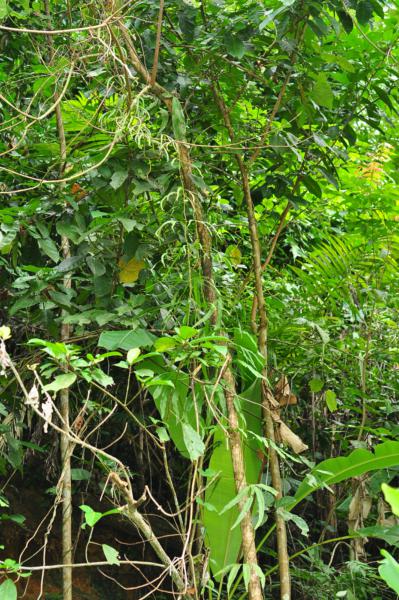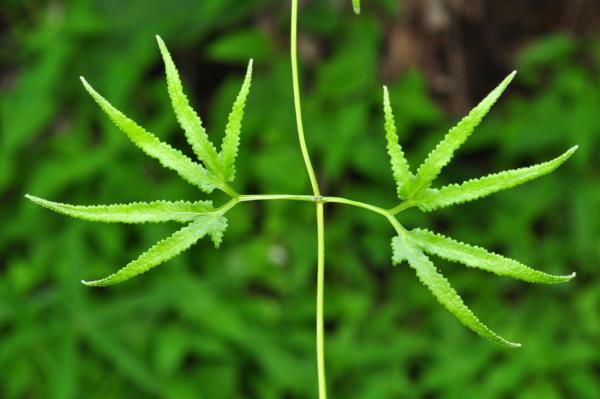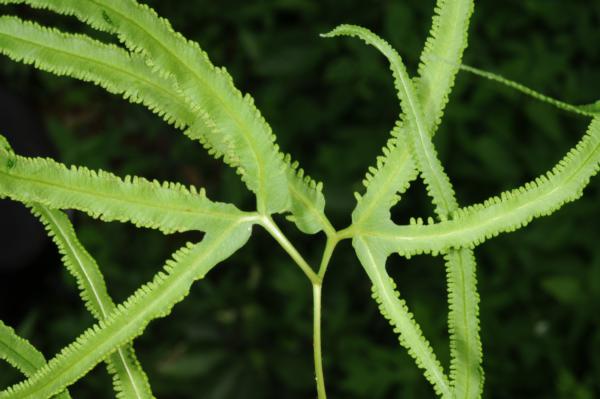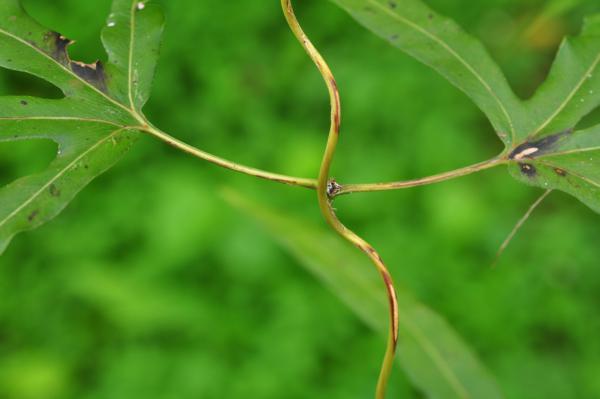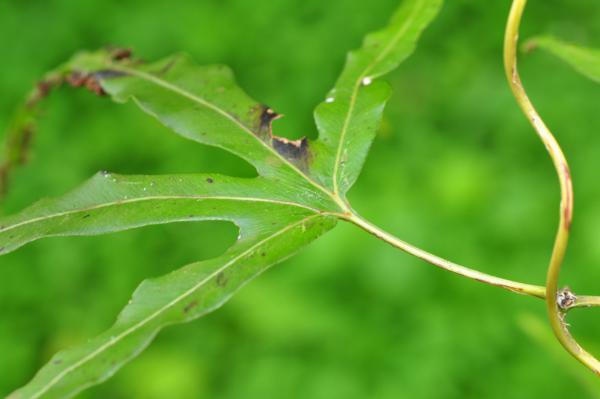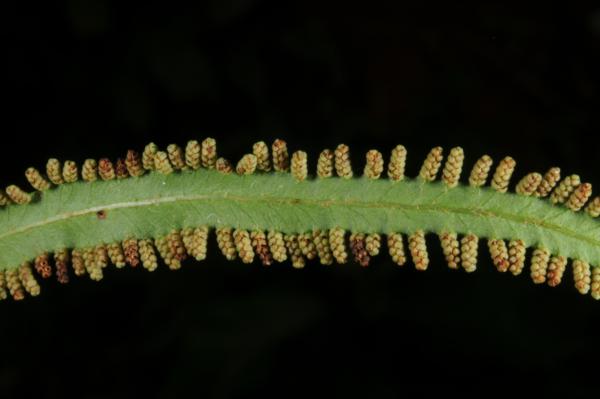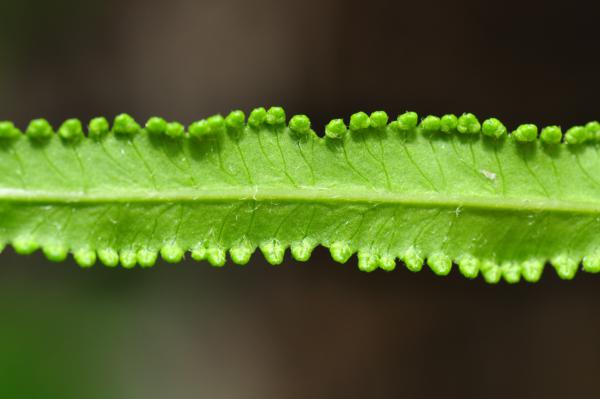
Lygodium circinnatum (Burm.f.) Sw.
Family
Lygodiaceae
Nomenclature
Lygodium circinnatum (Burm.f.) Sw., Syn. Fil.: 153. 1806; Bedd., Handb. Ferns Brit. India: 455, f. 281. 1883; Holttum, Rev. Fl. Malaya ed. 1, 2: 55, f. 9. 1955 [‘1954’]; Holttum, Fl. Males., Ser. II, Pterid. 1: 59, f. 5d & 14. 1959; Tagawa & K.Iwats., Acta Phytotax. Geobot. 23: 51. 1968; Tagawa & K.Iwats., Fl. Thailand 3: 65. 1979; Boonkerd & Pollawatn, Pterid. Thailand: 82. 2000. – Ophioglossum circinnatum Burm.f., Fl. Ind.: 228. 1768.
Lygodium conforme C.Chr., Bull. Mus. Natl. Hist. Nat. II. 6: 104. 1934; Tardieu & C.Chr., Fl. Indo-Chine 7(2): 35. 1939. – Type: Colani 2983, Vietnam, Lang Nac (BM; P x3, US).
Description
Rhizome shortly creeping, densely covered with blackish hairs. Fronds large, climbing to several metres; stipes brownish stramineous, hairy on the lower part, narrowly winged on upper part; rachis 2–5 mm diam., glabrous, with very short wings (or ridges) or not; primary rachis-branches very short, less than 2 mm long, the apex dormant and somewhat sunken, covered with pale brownish hairs; secondary rachis-branches 2–4 cm long, sometimes branching once dichotomously; sterile leaflets with 2–7 lobes palmately divided with cuneate base, the lobes gradually narrowing towards acute apex, entire at margin, up to 20 cm long, more than 2 cm broad, sometimes fertile on the upper part; lamina softly papyraceous, glabrous except sparsely hairy main veins, sometimes warty; fertile leaflets similar in the branching system to the sterile ones, narrower or not, up to 1.6 cm broad (excluding the sporangia-bearing lobes). Sporangia-bearing lobes protruding, numerous at margin of tertiary leaflets, 2–5 mm long, about 1.2 mm broad; indusia glabrous .
Distribution in Thailand
SOUTH-EASTERN: Chanthaburi; PENINSULAR: Surat Thani, Phangnga, Nakhon Si Thammarat, Satun, Yala, Narathiwat.
Distribution in Laos
Luang Phrabang.
Wider Distribution
Sri Lanka, NE India, throughout Malesia to Micronesia and the Solomons.
Ecology
In light shade in tropical evergreen forest at low or medium altitude.
Proposed IUCN Conservation Assessment
Least Concern (LC). This species is widespread and not under any known threat.
Notes
This is a very variable species . Larger forms have been recognised as Lygodium conforme but there would appear to be a continuum of variation from the smaller to the larger forms. Dy Phon (2000) records Lygodium conforme a synonym of Lygodium circinnatum, for Cambodia. We have seen no material and her description of "a small slightly climbing fern" usually would not to apply to this species. We are unclear what species it should be.
Uses. – Stems used in making handbags and hats.
Voucher specimens - Thailand
Larsen et al. 32007, Chanthaburi, Nam Tok Taka Mao (P); Middleton et al. 5353, Satun, Beside road 2 km from Thale Ban National Park (E); Sangkhachand 1399, Yala, Bannang Sata (P).
Habit
Young pinnae
Lamina
Rachis, primary rachis branch (extremely short) and two secondary rachis branches (ending in lamina)
Secondary rachis branch and lamina
Mature sori
Young sori
Site hosted by the Royal Botanic Garden Edinburgh. Content managed by Stuart Lindsay, Gardens by the Bay, Singapore and David Middleton, Singapore Botanic Gardens. Last updated 24 January 2012
